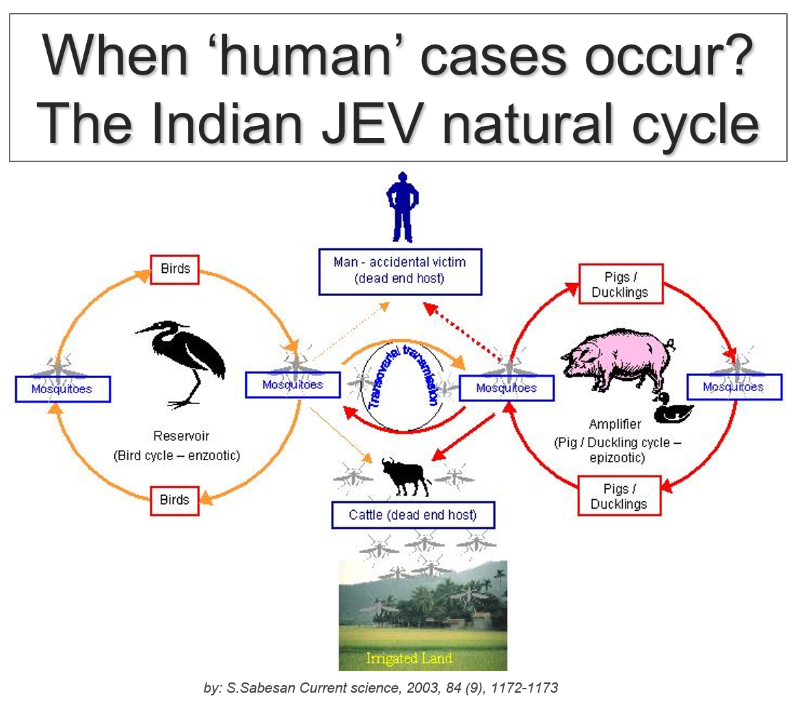OHNL - October 2017
Vector-borne Disease Emergence and Climate Change
Authors
Mariana Guerra
PhD Student
Diagnostic Medicine and Pathobiology
College of Veterinary Medicine
Kansas State University
Samantha Boyajian
DVM Student, Class of 2019
College of Veterinary Medicine
Kansas State University
Alexandra Allen
DVM Student, Class of 2020
College of Veterinary Medicine
Kansas State University
Climate plays an essential role in environmental conditions, and it can directly affect the habitats of animals and insects. As climate changes over a period of time, certain species must either adapt or relocate to survive. Due to these environmental drivers, the number of emerging and reemerging infectious diseases that are transmitted by animals and insects are increasing, causing negative impacts on health.
Overall, emerging diseases are a major threat to human and animal health. Consequences of emerging infectious diseases can result in increased morbidity and mortality in humans and animals as well as major economic losses. Several aspects strongly influence the complex interaction of the pathogen, host, and environment [1,2], often promoting the reemergence of an infectious disease. These include changes in pathogen adaptation through genetic mutation and recombination, changes in host or vector populations, pathogen transfer to new geographical regions through international trade and travel, pathogen switching from animal to human hosts, human behavior, and various environmental factors [3]. Consequently, these factors contribute to increased opportunities for infectious agents to encounter new ecological niches, adapt to new hosts, and/or spread more effectively than they were able to previously.
Geographic Distribution of Japanese Encephalitis Virus. (2015).
Adaptation to environmental changes can be advantageous for vectors, and can also have a significant impact on the transmission and spread of existent and/or newly introduced infectious diseases which threaten human and animal health [4]. In particular, vector-borne diseases, such as malaria, dengue, and Japanese encephalitis (JE), and leptospirosis are extremely sensitive to climate change [2].
For example, Culex mosquitoes, often reside in either fresh water or 'brackish water', which is a mix of fresh water and seawater commonly found in estuaries. As the incidence of tsunamis and cyclones increase, the surface areas of brackish water in coastal areas also increase due to torrential rainfalls and flooding [5]. The increased availability of brackish water expands the breeding areas for Culex mosquitoes. This new breeding ground is sometimes located further inland and on new land masses where mosquitos were not previously located, increasing the contact rate between Culex mosquitoes, humans and animals [6].

The Link Between Climate Change and Japanese Encephalitis (JE)
JE is a vector-borne disease transmitted by the bite of a Japanese encephalitis virus (JEV)-infected Culex mosquito. JE is among the most important viral encephalitis diseases in Asia, and more recently emerged in the Australian continent [7]. The World Health Organization (WHO) has estimated that 67,900 cases of JE occur annually in at least 24 JE-endemic countries [8]. However, the precise incidence of JE has been difficult to assess because current surveillance methods, the sub-clinical infection, and available diagnostic methods have not been standardized across endemic areas.
JE virus ecology includes the association between Culex mosquitos and water birds, such as egrets and herons as reservoirs. However, most human cases are associated with contact between humans and JEV-infected pigs as amplifying hosts [9]. After infection, pigs develop mild symptoms. Similar to pigs, human JE infection results in mild symptoms like headaches, fever and disorientation; however, some individuals (0.1-4%) develop encephalitis, which can be fatal [8].
Multiple factors impact the complex epidemiology of JE infection; however, climate change has become one of the main reasons for infectious diseases, like JE, to become a threat to human populations [5, 6, 8]. Changes in rainfall patterns associated with natural disasters (i.e hurracaines or tsunamis), often result in water stagnation and a suitable breeding environment for JE mosquito vectors. Therefore, increasing the risk of humans and pigs of becoming potentially exposed to JE-infected mosquitoes [5].
Climate change is a reality, and in order to combat emerging infectious diseases in the face of ongoing climate change, a transdisciplinary approach among veterinarians, physicians, biologists, climatologists, and antropologists is required, but not limited to these disciplines. Indeed, a strong political commitment is needed to secure federal funding to continue interdisciplinary research that will expand our scientific understanding of the role of climate on the emergence and spread of infectious diseases. Moreover, improved and efficient methods of disease surveillance will afford timely anticipatory measures by the medical community and ultimately support optimized preventive strategies in the future [1].
Resources
- Patz, J. A., Epstein, P. R., Burke, T. A. & Balbus, J. M. Global climate change and emerging infectious diseases. JAMA275,217–223 (1996).
- Epstein, P. Climate change and emerging infectious diseases. Microbes and Infection747–754 (2001).
- Morens, D. M., Folkers, G. K. & Fauci, A. S. The challenge of emerging and re-emerging infectious diseases. Nature242–249 (2004).
- Ramasamy, R. & Surendran, S. N. Global Climate Change and Its Potential Impact on Disease Transmission by Salinity-Tolerant Mosquito Vectors in Coastal Zones. Frontier in Physiology198,(2012).
- Prummongkol, S., Panasoponkul, C., Apiwathnasorn, C. & Lek-Uthai, U. Biology of Culex sitiens, a Predominant Mosquito in Phang Nga, Thailand after a Tsunami. Journal of Insect Science12,(2012).
- Bai, L., Morton, L. C. & Liu, Q. Climate change and mosquito-borne diseases in China: a review. Globalization and Health9,(2012).
- Campbell, G. et al.Estimated global incidence of Japanese encephalitis: a systematic review. Bulletin of the World Health Organization.
- Le Flohic , G., Porphyre, V., Barbazan, P. & Gonzalez, J.-P. Review of Climate, Landscape, and Viral Genetics as Drivers of the Japanese Encephalitis Virus Ecology. PLOS: Neglected Tropical Diseases(2013).
- Japanese Encephalitis. Centers for Disease Control and Prevention (2015).
